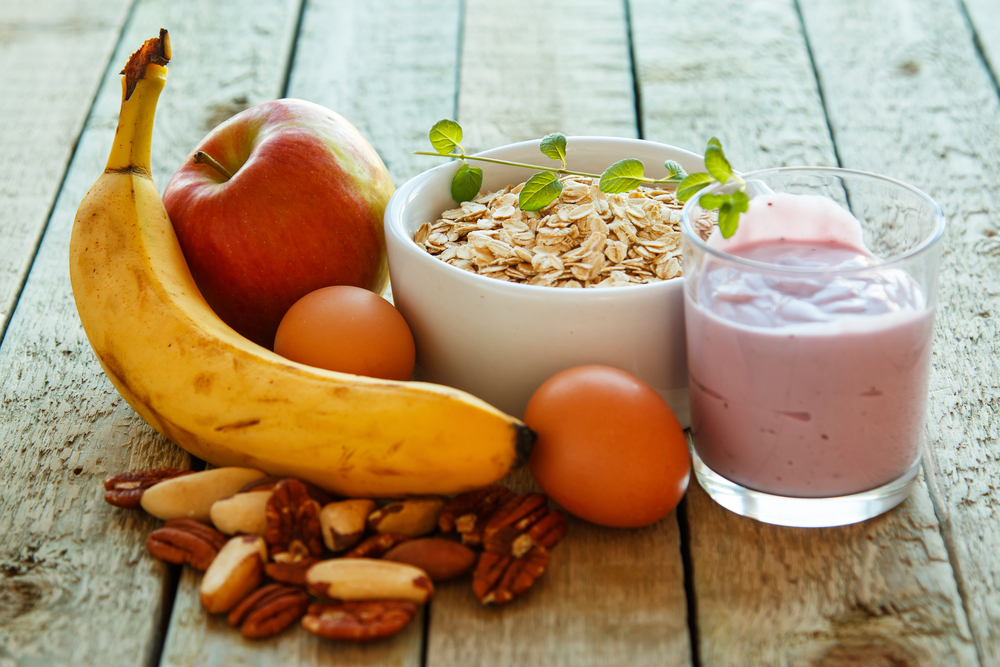Everyone agrees that eating the right foods is important for a healthy diet. But even though many diet gurus are quick to tell you to eat certain foods for optimal health, or avoid others because they will drastically hurt your health, individual foods are generally not what will make your diet healthy.
You always have to look at the complete picture. Your body does NOT look at individual foods, but your diet as a whole. It does not evaluate the individual foods you eat and automatically becomes healthy if it’s a “clean food” or unhealthy if it’s a “bad food”. What matters is the total of all the foods you eat and the total energy and nutrients they contain.
If you’re fulfilling your nutritional requirements through traditional “clean foods” most of the time and then have some ice cream, your body will automatically stop being healthy or gain large amounts of fats overnight. Proper dieting is all about the big picture.
In fact, study after study has shown that you can eat foods that are regarded as less healthy like chocolate bars or chips if you don’t do it in excess and if the rest of your diet consists of quality unprocessed foods.
This is why in this post, I will give you a range of foods to choose from that should make up most of your diet (around 80 to 90%). If you stick to these and keep your calories in check you can fill the rest of your diet with whatever you like. Sounds pretty awesome right?
The foods we are going to talk about are split according to their macronutrients, so protein, carbs and fats. Most people should focus on them and make the changes I am about to tell you first before committing to a super complicated diet and also before spending hundreds of dollars on dieting gimmicks or supplements.
For the average dietary situation in the modern world, most people will benefit from the following changes:
– Getting the majority of their protein from complete or complementary protein sources
– Getting the majority of their carbs from mostly whole grains, fruits, and vegetables
– Getting the majority of their fats from sources of unsaturated fats
– And consuming mostly foods high in vitamins and minerals
These are simple rules that will improve your diet so much that it will pretty much automatically become healthy.
Let’s now look at each macronutrient individually:
Protein – Get the majority from complete or complementary sources
Protein quality can be measured in a number of ways. Most often you wil hear the concept of bioavailability, which describes what percentage of the protein that you consume is actually absorbed into the bloodstream.
Another indicator of protein quality considers how much of the protein is composed of essential amino acids (which are those your body cannot make itself) and how much of the protein is composed of non-essential amino acids (which are those your body can make itself).
Obviously, sources that are rich in essential amino acids are of higher quality in this sense. In general, protein quality ranks from animal sources to plant sources. Here is a short list of common foods ranked by their protein quality according to the concepts I just mentioned, starting with the most quality sources first.
Whey Protein
Eggs
Meats (beef, pork)
Poultry (chicken, turkey)
Fish and Seafood
Soy Protein and Quinoa
Combined Plant Sources (like beans and rice)
Isolated Plant Sources (whole grain bread by itself, nuts by themselves)
What this means is that all things equal your diet will be better if the proteins higher on the list predominate in your diet over the proteins lower on the list. But, and this is a big but, don’t go out and buy buckets full of whey protein powder while consuming nothing else.
First of all the differences between the foods are very small accounting for a few percent of diet success at the most. Second, there is nothing worse for your physical and mental health that a completely one-sided diet. Even though nuts for example aren’t the highest quality source of protein, they are a great source of healthy fats and micronutrients.
The same goes for other plant-based proteins or fish and seafood. This also means that vegetarian athletes will see great results as long as they make sure to get their protein from a variety of plant sources to ensure they get all essential amino acids through their diet.
Carbohydrates – Get the majority from mostly whole grains, fruits, and vegetables
As for quality carbohydrate, the best sources are unprocessed whole foods, like fresh fruit, legumes, whole grains, and many vegetables. These foods also contain fiber, vitamins, minerals and antioxidants. Foods made with refined grains generally have fewer of these nutrients and will leave you less satisfied. This increases the chances of overeating and excess calories.
Quality whole grain sources include:
– Whole grain bread
– Whole grain pasta
– Whole grain cereal (with no added sugar)
Quality vegetable sources include:
– Carrots
– Cauliflower
– Broccoli
– Peppers
Quality fruit sources include:
– Bananas
– Mangos
– Apples
– Orange
– Pears
Quality legumes include:
– Beans
– Peas
– Lentils
Other sources that I haven’t mentioned but which are also good include:
– (Sweet) Potatoes
– (Brown) Rice
– Quinoa
– Oatmeal
Fats – Get the majority from sources of unsaturated fats
There are three basic categories of fat: unsaturated, saturated, and trans fats. Unsaturated fat can be further broken down into two forms: monounsaturated and polyunsaturated. Including these healthy fats as a part of a well-balanced diet can result in a lowering of cholesterol levels and help prevent heart disease.
The body needs a moderate amount of healthy fat to function properly, and the main source of fat should come from unsaturated fats. Good sources include:
– Avocados
– Salmon
– Olives and Olive Oil
– Nuts and nut butters (when not highly processed)
– Flaxseed
– Tuna
– Dark Choclate
– Sunflower seeds
Saturated fats are most commonly found in animal products like fatty steak, dairy, butter, and cheese. While they are not bad for health when consumed in moderation and as part of a balanced diet, their consumption in excess and/or and as part of a one-sided diet can become problematic. Quality sources of saturated healthy fats include:
– Whole eggs
– High-quality lean meat
– Coconut oil
– Full fat milk
And lastly, trans-fats, are fats most commonly used to increase the shelf life of common baked goods. They are definitely bad for your health and should be avoided or at least limited. Sources include:
– Pizza
– Hot dogs
– Hamburgers
– basically any type of fast food
– basically any type of fried food



